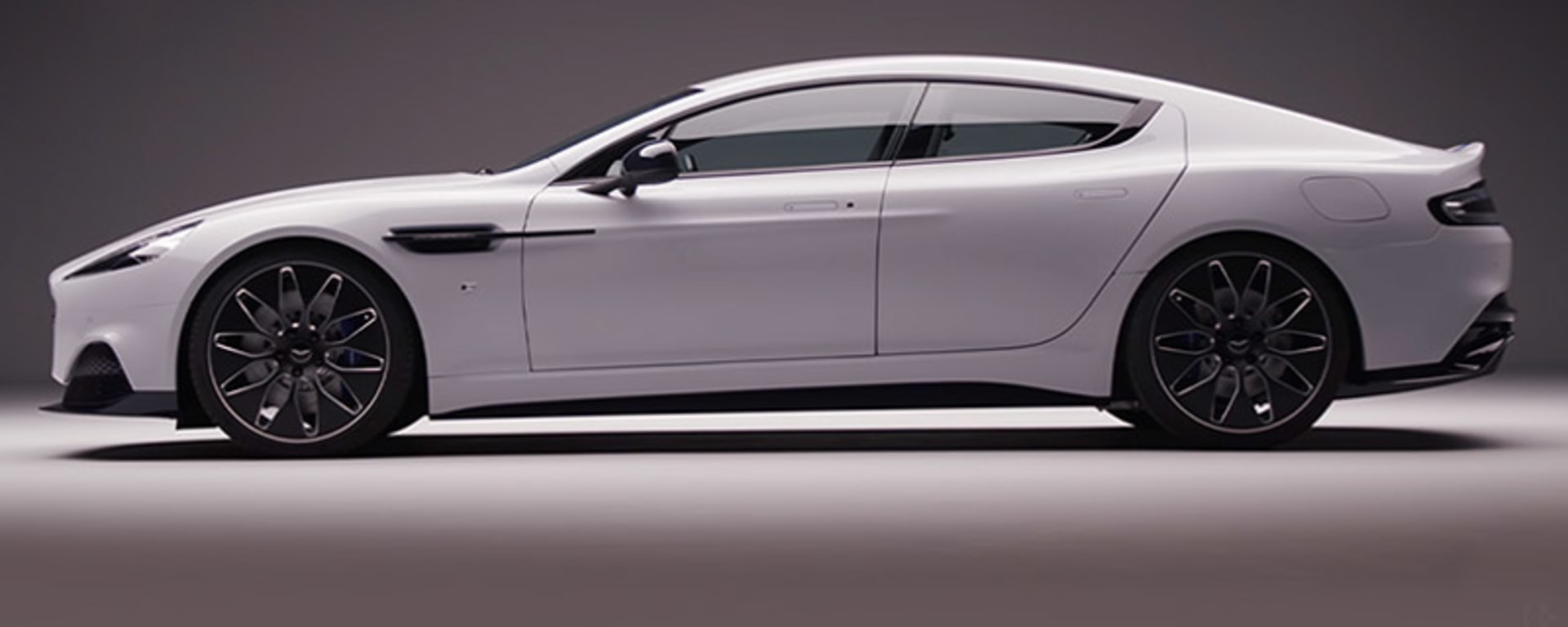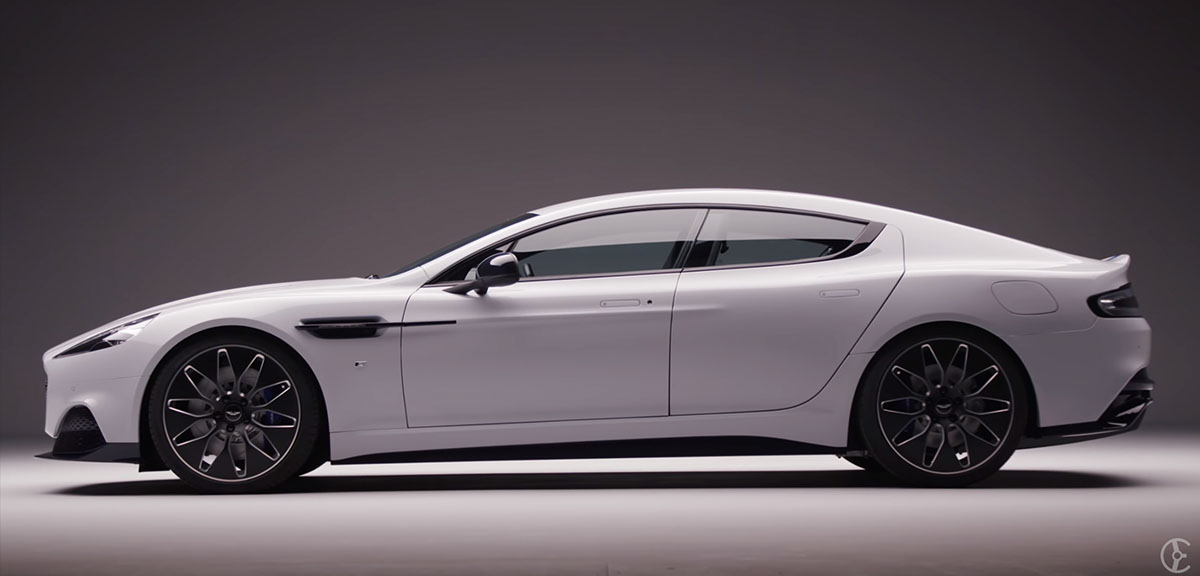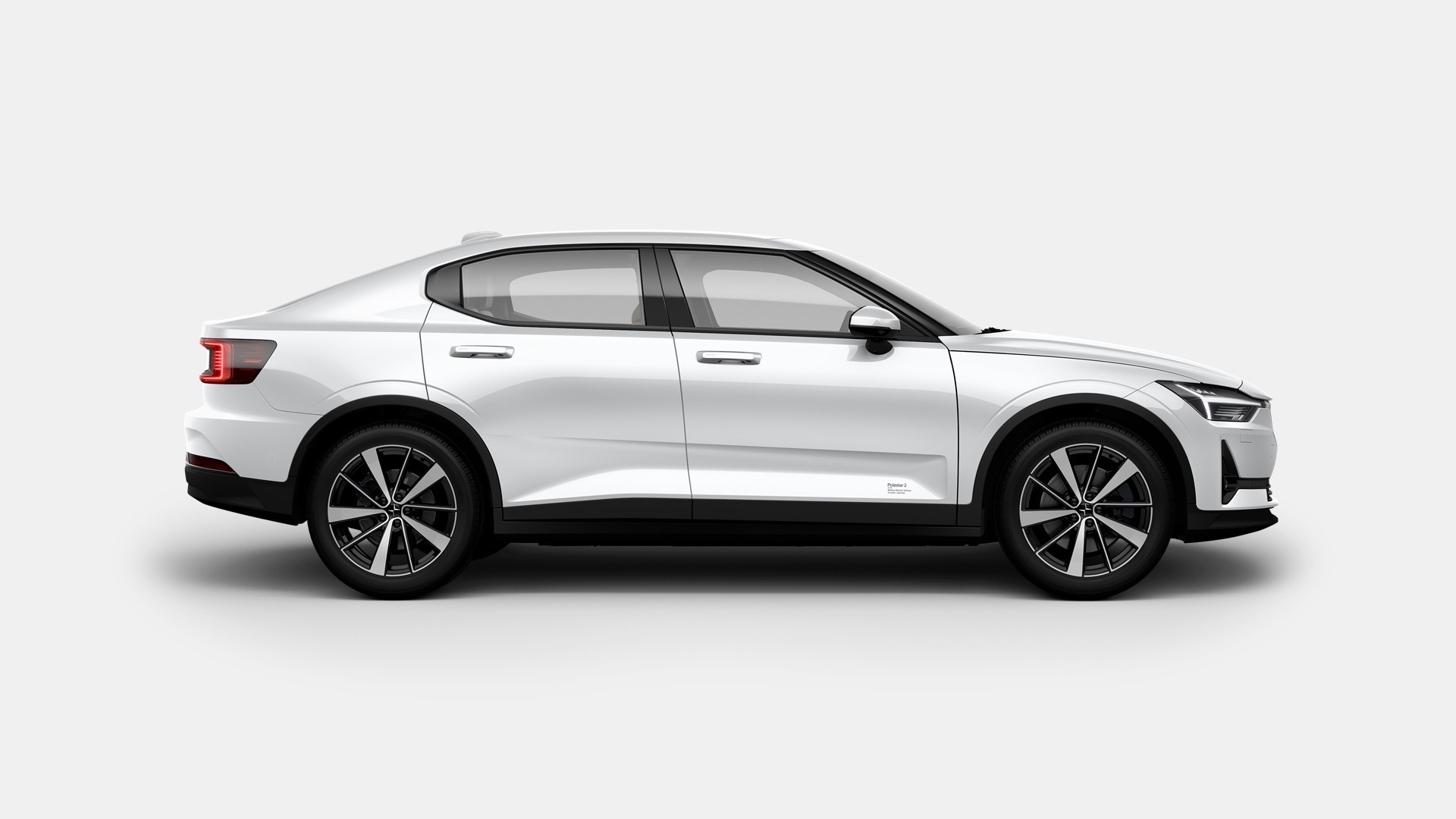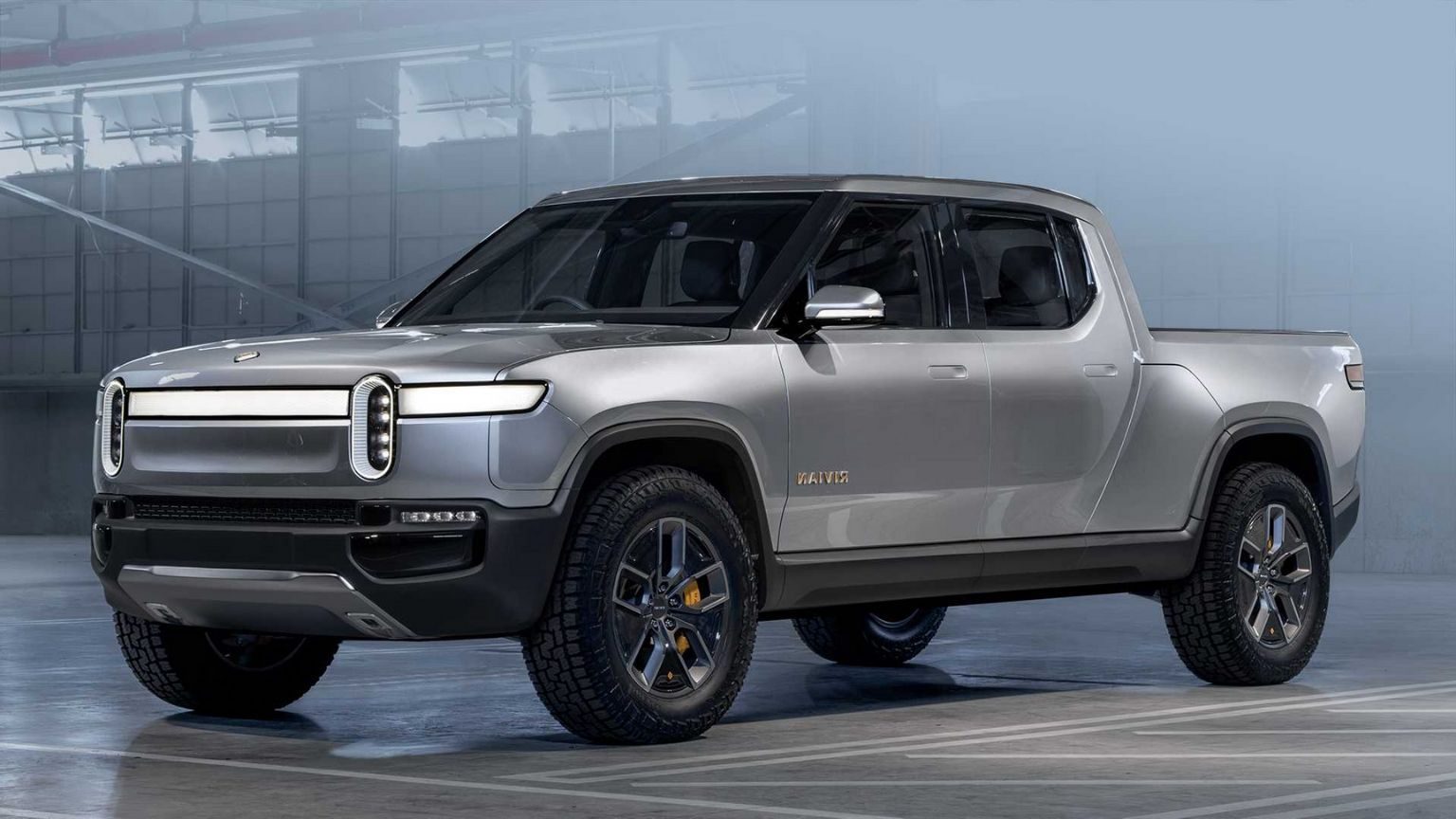
At turbo speed towards sustainability
Published on 31.03.2020 CEST
11 new electric vehicles for 2020 – and a clean tech future
In recent years, the big international car manufacturers have had one big goal – to catch up with Tesla. This year we will see a whole range of new E-models hitting European roads – for every need and every budget.
The presented models at a glance:
- Aston Martin Rapide E
- Audi e-tron GT
- BMW iX3
- Mercedes-Benz EQV
- Mini-Electric
- Polestar 2
- Rivian R1T-Truck
- Porsche Taycan
- Volvo XC40 electric
- Volkswagen ID.3
- Lotus Evija
Aston Martin Rapide E

You can already place an order for Aston Martin's first all-electric vehicle, though you need to be quick, as production is limited to 155 cars (as it's top speed, at 155mph/250kph). Lucky owners will get an Aston with a 65 kWh, 5,600-cell lithium-ion battery pack that will put out 602hp. Performance will best the V12 Rapide AMR, so this means a 0-100kph in less than four seconds. A full range of 320km is estimated on the WLTP cycle, and the Rapide E can recharge at 300km each hour with a 50kW charger, or 500km each hour using 100kW or more.
Audi e-tron GT

Audi's e-Tron GT will be the third all-electric car from the brand. Two electric motors deliver all-wheel drive and 590hp. Standing start to 100kph comes in just 3.5 seconds – and then the GT sails on to a top speed of 240kph. WLTP range should be about 400km, with an 80 per cent recharge possible in a mere 20 minutes via the 800-volt charging system. The civilian edition will appear at the end of 2020, joining the e-tron SUV and e-tron Sportback crossover. As for that “developed in close collaboration with Porsche” claim? It basically means that for all intents and purposes, it’s practically a Taycan. The brake-energy recuperation system means that up to 0.3 g you won’t be using the ceramic disc brakes but feeds the energy via the motor back into the battery. What's more, you use the paddles to vary deceleration (mirroring engine braking on downshifting). And, for full eco-credibility, the GT has a vegan interior.
BMW iX3

BMW’s first all-electric SUV is sensibly a restyled X3 with a modular EV drivetrain where the motor, transmission and power electrics are grouped into a single component. The battery has “over 70kWh” capacity, which means more than 400km of WLTP range. You also get 268bhp and a 30-minute re-charge time from a 150kW fast-charger. Unlike BMW's i3, the iX3 has not been built specifically as an EV but fashioned from an existing architecture to fit an EV drivetrain. This method of production gives BMW tremendous manufacturing flexibility going forward, allowing it the option to produce ICE, hybrid and EV versions of future models on the same production line.
Mercedes-Benz EQV

Taking a practical turn away from electric hypercars and urban runabouts, the Mercedes EQV is an electric premium people carrier. This may seem a strange concept, but people carriers' large size makes them perfect candidates for electrification, as big batteries can be fitted into the floor. For the EQV, along with a wide range of seating options, Mercedes is offering a 100kWh battery with a claimed 400km range, and the ability to add 100km with 15 minutes of charging. At the other end of the scale, Mercedes brand Smart has two new full-EV city cars under its "EQ" branding, the EQ fortwo and EQ forfour – both coming in spring. Each model has an approximate range of 145km, top speed of 130kph, and allows 22kW fast charging, enabling a charge from ten to 80 per cent in less than 40 minutes.
Mini Electric

When it launches in March 2020, the Mini Electric will be the BMW Group's cheapest full EV, costing less than the BMW i3. The car will be good for a zero to 100kph in 7.3 seconds, with a maximum output of 184hp and torque of 270Nm. Top speed is limited to 150kph, WLTP range will be between 124 and 144 miles, and at a 50kW DC fast-charging station, the car can get an 80 per cent charge from zero in just 35 minutes. The 5.5-inch colour digital dash is a highlight, as is the central 6.5-inch touchscreen and optional Harmon Kardon sound system.
Polestar 2

Polestar's second vehicle will be a full EV with a 300kW (408hp) all-wheel drive powertrain, a long-range battery for 500km of motoring on the more stringent WLTP test cycle, and the same high level of specification seen on the Polestar 1. The 0-100kph sprint is clocked at 4.7 seconds from two electric motors, mounted across both axles. Inside, Polestar 2 will also have the first 11-inch Android infotainment system, while the car itself is designed to promote sharing – owners will be able to "send" keys to another phone via the "Phone-as-Key" technology.
Rivian R1T-Truck

As well as releasing the R1S – a seven-seat SUV with a claimed range of more than 600km – Rivian is bringing out this five-seat pick-up truck in late 2020 that is built on the same platform. There are three sizes of battery for both models – 105kWh, 135kWh and 180kWh – with ranges north of 370km, 480km and 600km respectively, with a top speed is 200kph. The dash features a 15.6-inch touchscreen, a 12.3-inch display acting as the instrument cluster, and a 6.8-inch touchscreen for use by rear-seat passengers. The pick-up has a wading depth of one metre, lockable storage bins for carrying bulky objects, and an all-wheel-drive system which splits the power between four electric motors, one for each wheel.
Porsche Taycan

The fact that even Porsche is going into full EV speaks volumes. The much-anticipated Taycan is a four-door, five-seat saloon car with an electric motor powering each axle, variable all-wheel-drive, and a WLTP range of up to about 450km. Inexplicably appearing in both Turbo and Turbo S flavours (you cannot "turbocharge" an EV), a lesser, non-turbo-model will join the range, and in late 2020 the same platform will be used by a vehicle known for now as the Cross Turismo – a Taycan with a chunkier, taller body. How fast is it? Very. The Taycan Turbo S normally produces 460kW (616bhp), but this is increased to 560kW (750bhp) for 2.5 seconds with an overboost function. Maximum torque is a claimed 1,050Nm. The result is a 0-100kph time of 2.8 seconds and limited top speed of 260kph.
Volvo XC40 electric

Volvo has had a big hit with the XC40 crossover (it's the best-selling Volvo in the UK), so it's no surprise that the company should call upon the electric prowess of sister brand Polestar to bring out the XC40 electric. The battery-powered XC40 will be the first all-electric production Volvo – the Swedish manufacturer plans for half of all sales to be full EVs by 2025. If you don't quite want to go full EV, an XC40 T5 petrol-electric plug-in hybrid will also launch in early 2020. The car will ride on a new platform, called Compact Modular Architecture, which is also used on the 01, 02, and 03 models from Lynk & Co, another brand owned by Volvo’s parent company Geely.
Volkswagen ID.3

Volkswagen has an enormous number of electric cars coming, but this is perhaps its most important. The affordable ID.3, which will come in three versions, intentionally bears a strong resemblance to the Golf. Indeed, it has been described by the company as has having the interior space of a Passat, and the performance of a Golf GTI. The base model has a range of 330km, while the top spec version can go for 550km. Inside, a 10-inch infotainment screen replaces most of the buttons and switches, as all but the windows and hazard lights are controlled via the touchscreen or touch-sensitive pads. As for those other EV VWs? Volkswagen says it will produce 15 million vehicles based on ID hardware by 2028.
Lotus Evija

The first electric Lotus is set to cost a hefty £2m when production of the 130 examples begins in 2020. Lotus, thanks to major investment from Chinese owners Geely – also owners of Volvo and Polestar – now finally has the resources to deliver an electric hypercar with serious stats: power output of 2,000 PS (1,972bhp); 1,700Nm torque; 0-300kph in under nine seconds (five quicker than a Bugatti Chiron); 0-100kph in under three seconds; top speed over 320kph. What’s more, the Evija has four electric motors – two per axle – powered by a 70kWh, 680kg battery pack that shuns the typical floor location (see Tesla), and instead is placed behind the seats. This means Lotus has lowered the floor, seats and roof, to shrink the ride height to 105mm, and still achieve a target driving range of 400km on the WLTP cycle.
For institutional investors: Our thematic investments combine Vontobel's expertise in selected investment strategies, for example in the area of the topic sustainability.
About the author
Jeremy White is executive editor of Wired UK
Who are we? How do we live today? And how will the digitization change our lives? How the future will unfold is preoccupying society more than ever, with engineers, doctors, politicians—each one of us, in fact—seeking answers. This article on the new EV´s is one of many contributions that shed light on the theme “mobility” from a new, inspiring perspective. We are publishing them here as part of our series “Insights”.